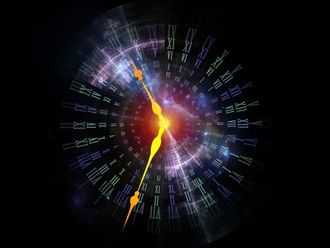
UTC, the coordinated universal time
Hardly anyone uses it directly, but it is the basis for the system of clock times around the globe: the coordinated universal time. Based on the French term, it is abbreviated as UTC.UTC is not a time zone, however, but the reference time on which the individual time zones are based. With it the individual zones are set into a relation. For example, during standard time, California is in zone time UTC-8, which is 8 hours behind the reference time.
UTC is a coordinated reference time
UTC is not a time zone, but a reference time. Once apart from aviation and space travel as well as in some scientific devices the UTC is also hardly used. Time zones, on the other hand, are independent and keep a date and time in their area of validity, with their difference to UTC being indicated. New York is located in the time zone "Eastern Time", which keeps the zone time UTC-5. In Paris, Madrid and Berlin it is the Central European Time zone with UTC+1.So UTC is the reference time and UTC+0 is the zone time (but not a time zone) which is valid on the zero degree of longitude.
UTC and the atomic time
There are currently more than 600 atomic clocks around the globe. The results of all clocks are brought together in Paris at the Bureau International des Poids et Mesures (BIPM).The international atomic time (AIT) measures the oscillations of a caesium atom. This atom, along with hydrogen and rubidium, has proven to be particularly stable, so that one can assume the same oscillation frequency even after a very long time. So the atomic time actually measures "time". On the basis of the small caesium atom it is defined how long one second lasts.

The coordinated world time depends on the ecliptic of the earth around the sun and the earth rotations. As the best example, the leap day on February 29, which is inserted every 4 years, helps to keep the seasons constant where they belong. If we had no leap days, the meteorological summer would take place in winter after about 2900 years. But there are also leap seconds, which are added every few years to catch deviations of the earth rotation. Only briefly explained: The earth rotation slows down, therefore the days become longer. Only minimally, but in the last 50 years one already added over 30 leap seconds.
The UTC now takes the atomic time as a basis and corrects it for all necessary deviations. However, these corrections are not made by making the second 14 millionths longer. Instead, leap seconds are introduced according to fixed rules on fixed days. This is the "C" in UTC. It is coordinated. 
UTC and the Greenwich Mean Time
UTC is the time at the zero degree of longitude, i.e. the zero meridian, which also runs through the world-famous London suburb of Greenwich. Since London has UTC+0 zone time, there is therefore no difference between the two in practice. 12 o'clock UTC corresponds to 12 o'clock Greenwich Mean Time (GMT).Nevertheless, UTC and GMT are not the same thing. In fact, they are completely different things, because while GMT is a time zone with a time, UTC is a reference time that is hardly used in everyday life. The times of the individual time zones are based on it.
Greenwich Mean Time itself had the status of a reference time until January 1, 1972, but it was not accurate enough. In Greenwich, the time was calculated on the basis of mean solar time, so the seconds were already minimally longer than the atomic clocks specified. Therefore, the new, now very precisely calculated "Universal Time Coordinated" was created, which better met the increasing demands for accuracy. Since then, GMT is a normal time zone in the zone time UTC+0.As tiny as this difference may be, it makes clear that GMT has a different time than UTC. The difference amounts to maximally 0.9 seconds. Because at the latest then a leap second is inserted again into the UTC, in order to compensate the difference.
Zone times and time zones
A time zone is e.g. the American "Pacific Time", the Brazilian Time or also the Central European Time. These zones therefore have a name. Within these zones a time is valid, whose distance to the coordinated world time is indicated as zone time. So e.g. UTC+1 for the Central European Standard Time or UTC+2 for the Central European Summer Time. The zone time is therefore always a number relative to UTC.There are several time zones per zone time. For example, Greenwich Mean Time (GMT) and Western European Time (WET) lie together in the zone time UTC+0. In everyday life, both result in the same time, but they are not the same. While GMT extends its seconds so far that no leap seconds are necessary at all, WET takes over the recommendations for the insertion of leap seconds from the International Bureau of Weights and Measures in Paris. Whether and when these leap seconds are inserted is determined jointly by the countries of the respective time zone.
Also, the changeover to daylight saving time does not depend on the zone time, but on the time zone. Although the dates are now largely aligned, there are still differences. For example, in Paraguay, Chile and on the Canadian east coast, people change to daylight saving time and back again on completely different days, although all countries are in the same zone time UTC-4.
 Timezones overview worldwide
Timezones overview worldwide All Countries with DST
All Countries with DST Timezones and time changes in the United States
Timezones and time changes in the United States